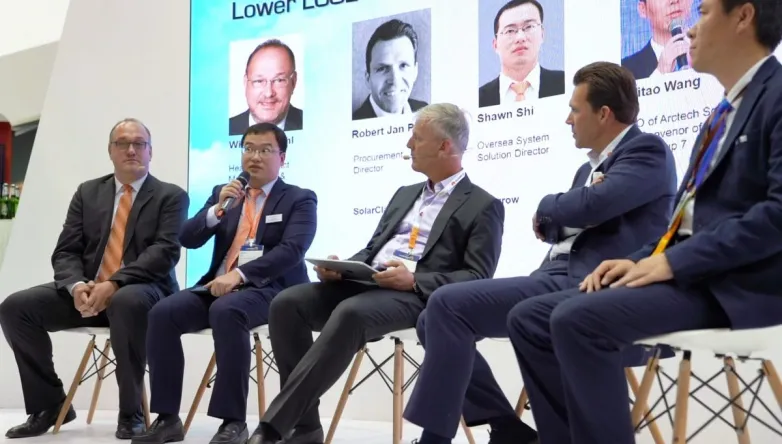Longi: ‘Our larger wafer must be industry standard’
Aug 29, 2019 09:32 PM ET
- The Chinese giant has argued its 166mm M6 product should be the new iteration used worldwide, even though larger products have been launched by rivals. Longi says the fact existing cell and module production lines can be adapted for the M6 means rising demand for solar worldwide can be swiftly satisfied.

Solar manufacturing giant Longi has attempted to pull the rug from under rivals which have launched larger monocrystalline wafers by claiming its biggest product must be adopted as the industry standard.
In a remarkable press release issued by the company today, Longi Group president Li Zhenguo said the proliferation of super-sized wafers unveiled by his company’s rivals in the last 12 months will disrupt what could be a homogeneous supply chain capable of meeting an anticipated explosion in global demand for solar modules.
“If manufacturers cannot reach an agreement on a size standard it will restrict the development of the whole industry,” said Li in the Longi statement.
With rival Chinese manufacturer Zhonghuan Semiconductor having 12 days ago launched a 12-inch Kwafoo wafer it claims could generate up to 610 W in an optimal module configuration, Longi appears to be attempting to use its dominant position in global solar manufacturing to enforce its own product as the industry standard.
Bumper orders
Longi today claimed it has already banked a thumping 2 GW of orders for its Hi-MO4 solar module – which incorporates the 166mm² M6 mono wafer – and is ready to start large-scale production before the end of next month.
With the Chinese giant pledging to upgrade all of its extensive cell and module production capacity to support the M6 product next year, the advantage to be gained by being first in on the next generation of PV wafer is obvious.
In today’s statement, Longi made the case that its M6 wafer should be industry standard ahead of larger, more productive alternatives because existing cell and module production lines could be adapted for its use. Larger alternatives would require whole new manufacturing facilities, claimed Longi.
The upper limit
“The 166mm wafer has reached the allowable limit of production equipment, which is difficult to overcome,” said Professor Shen Wenzhong, director of the Solar Energy Research Institute at Shanghai Jiaotong University, quoted in the press release. “This would be the upper limit of the standard for a considerable period. Existing crystal drawing and slicing equipment [is] compatible with [a] 166mm size silicon wafer. Production equipment for cell and module [manufacturing] needs to be modified, though the costs are lower and easier to achieve. Calculated by ‘flux’, cell and module production [lines] using [the] 166mm wafer will increase capacity by 13%, as compared with the 156mm size.”
Longi revealed in May its M6 wafer will cost RMB0.2/piece ($0.028) more than its M2 product, at RMB3.47/piece, and said that difference will be wiped out with the advent of large scale production this year.
It appears the ball is back in Zhonghuan Semiconductor’s court.
Also read


